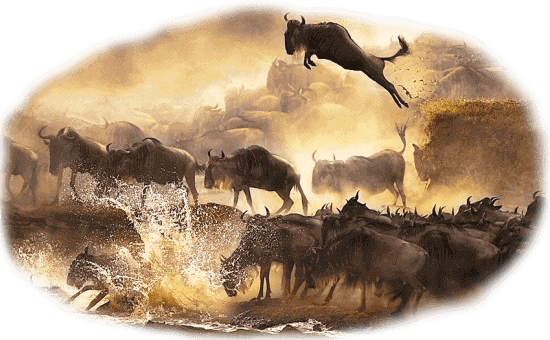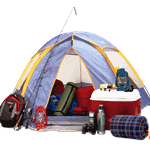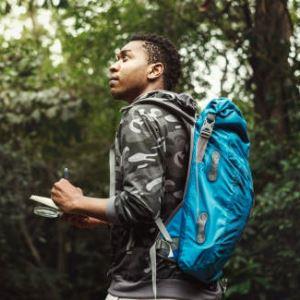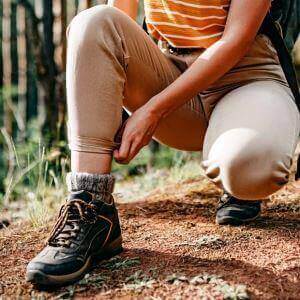 Planning a wildlife safari in Kenya is an exciting adventure, especially for travelers coming from New Zealand. With Kenya’s rich biodiversity, iconic game parks, and opportunities to see the Big Five, knowing when to go can significantly enhance your experience. The country’s seasonal patterns play a vital role in wildlife viewing, so understanding the best time to visit is key to planning a successful safari. For New Zealanders, the dry seasons are generally the most rewarding times for a safari. From June to October, Kenya experiences its longest dry spell. During these months, animals are easier to spot because vegetation is sparse and wildlife gathers near permanent water sources. This period is especially ideal for viewing lions, elephants, rhinos, buffalo, and leopards in their natural habitat. Another brief dry season runs from January to March, which is also a good time for game viewing with clear skies and pleasant weather. One of the most thrilling events to witness is the Great Wildebeest Migration. Each year, over a million wildebeest, accompanied by zebras and gazelles, cross the plains of the Serengeti into Kenya’s Maasai Mara. This dramatic journey takes place between July and September and offers New Zealand visitors a front-row seat to nature’s greatest show. Watching the massive herds cross crocodile-infested rivers is a heart-pounding experience that many travelers consider the highlight of their trip. Weather plays a crucial role in safari planning. Kenya’s two rainy seasons long rains from April to May and short rains in November can make travel more difficult. Roads can become muddy and some parks may be harder to access. However, these months also offer fewer tourists and lush green landscapes, which some travelers may find appealing despite the challenges. Still, most New Zealanders prefer the dry months for optimal wildlife visibility and easier logistics. For those looking to combine adventure with comfort, many lodges and camps offer luxurious accommodations and guided game drives. Booking in advance, especially during peak months like July and August, is highly recommended. Flights from New Zealand typically connect through major hubs such as Dubai or Doha, with final arrival in Nairobi, Kenya’s capital. Kenya offers a variety of wildlife experiences year-round, but the best opportunities for game viewing and photography align closely with the country’s dry seasons. These dry months, particularly from June to October and again from January to March, provide the clearest visibility and best chances of spotting iconic species like lions, elephants, and rhinos. The sparse vegetation and reduced water sources during these times draw animals into the open and near rivers or waterholes, allowing safari-goers to enjoy more predictable wildlife encounters. The dry seasons are also optimal for guided game drives, walking safaris, and photography tours due to the consistent weather and scenic golden light. While Kenya is a year-round destination, wet months like April, May, and November can bring heavy rains that may limit access to some national parks and make wildlife tracking more difficult. For travelers from New Zealand, aligning their holiday plans with Kenya's dry seasons will maximize their safari experience and minimize travel disruptions. Using a reliable Kenya safari timing guide for New Zealand visitors ensures that every aspect of the journey, from wildlife viewing to travel logistics, is optimized for enjoyment and success in the wild landscapes of East Africa.
Planning a wildlife safari in Kenya is an exciting adventure, especially for travelers coming from New Zealand. With Kenya’s rich biodiversity, iconic game parks, and opportunities to see the Big Five, knowing when to go can significantly enhance your experience. The country’s seasonal patterns play a vital role in wildlife viewing, so understanding the best time to visit is key to planning a successful safari. For New Zealanders, the dry seasons are generally the most rewarding times for a safari. From June to October, Kenya experiences its longest dry spell. During these months, animals are easier to spot because vegetation is sparse and wildlife gathers near permanent water sources. This period is especially ideal for viewing lions, elephants, rhinos, buffalo, and leopards in their natural habitat. Another brief dry season runs from January to March, which is also a good time for game viewing with clear skies and pleasant weather. One of the most thrilling events to witness is the Great Wildebeest Migration. Each year, over a million wildebeest, accompanied by zebras and gazelles, cross the plains of the Serengeti into Kenya’s Maasai Mara. This dramatic journey takes place between July and September and offers New Zealand visitors a front-row seat to nature’s greatest show. Watching the massive herds cross crocodile-infested rivers is a heart-pounding experience that many travelers consider the highlight of their trip. Weather plays a crucial role in safari planning. Kenya’s two rainy seasons long rains from April to May and short rains in November can make travel more difficult. Roads can become muddy and some parks may be harder to access. However, these months also offer fewer tourists and lush green landscapes, which some travelers may find appealing despite the challenges. Still, most New Zealanders prefer the dry months for optimal wildlife visibility and easier logistics. For those looking to combine adventure with comfort, many lodges and camps offer luxurious accommodations and guided game drives. Booking in advance, especially during peak months like July and August, is highly recommended. Flights from New Zealand typically connect through major hubs such as Dubai or Doha, with final arrival in Nairobi, Kenya’s capital. Kenya offers a variety of wildlife experiences year-round, but the best opportunities for game viewing and photography align closely with the country’s dry seasons. These dry months, particularly from June to October and again from January to March, provide the clearest visibility and best chances of spotting iconic species like lions, elephants, and rhinos. The sparse vegetation and reduced water sources during these times draw animals into the open and near rivers or waterholes, allowing safari-goers to enjoy more predictable wildlife encounters. The dry seasons are also optimal for guided game drives, walking safaris, and photography tours due to the consistent weather and scenic golden light. While Kenya is a year-round destination, wet months like April, May, and November can bring heavy rains that may limit access to some national parks and make wildlife tracking more difficult. For travelers from New Zealand, aligning their holiday plans with Kenya's dry seasons will maximize their safari experience and minimize travel disruptions. Using a reliable Kenya safari timing guide for New Zealand visitors ensures that every aspect of the journey, from wildlife viewing to travel logistics, is optimized for enjoyment and success in the wild landscapes of East Africa.
Peak Time for New Zealanders to Experience a Kenya Safari Adventure
| Safari Activity | Best Months | Notes |
|---|---|---|
| Big Five Sightings | June to October | Dry season, high visibility |
| Wildebeest Migration | July to September | Peak of river crossings in Maasai Mara |
| Best Weather Conditions | Jan–Mar, Jun–Oct | Avoid April–May due to heavy rains |
Best Months for New Zealanders to See Kenya's Big Five Wildlife
Seeing the Big Five lion, leopard, elephant, buffalo, and rhino is a dream for many New Zealand safari-goers, and Kenya is one of the best places in the world to make that dream come true. Timing your visit to align with Kenya's peak wildlife viewing seasons is essential for a truly rewarding experience. New Zealanders will find that the dry season, which stretches from June to October, offers the highest chance of seeing the Big Five in their natural habitat. During these months, the landscape becomes more arid, causing animals to gather at watering holes and open clearings, making them easier to spot and photograph. This period also coincides with the Great Wildebeest Migration in the Maasai Mara, creating thrilling opportunities to see predators like lions and leopards in action as they hunt migrating herds. The dry weather ensures comfortable travel conditions, with clear skies and minimal rain. Another excellent time to visit is from January to March, a shorter dry spell that still provides great wildlife sightings, particularly in places like Amboseli National Park where elephants are often seen with Mount Kilimanjaro in the background. For first-time visitors from New Zealand, it’s important to note that the rainy seasons April to May and November can make wildlife spotting more challenging. During these months, thick vegetation and muddy roads can hinder both access and visibility. While the lush green landscape during these times is beautiful and supports birdlife, it's not ideal for those focused on seeing the Big Five. Many safari operators offer tailored itineraries during the peak months, ensuring that guests are positioned near known animal territories. Expert guides, often trained trackers, enhance the experience by using their knowledge of animal behavior to lead you to the best sightings. National parks such as Maasai Mara, Tsavo, and Lake Nakuru are highly recommended for New Zealanders interested in Big Five encounters. These parks not only provide stunning backdrops but also diverse ecosystems supporting rich biodiversity. Planning your trip around the best months ensures a more comfortable and successful safari. Fewer mosquitoes, cooler evenings, and predictable animal behavior all contribute to a better overall experience. Booking in advance during these months is crucial, as demand increases and accommodations tend to fill quickly. Whether you’re a seasoned traveler or embarking on your first African adventure, understanding the best months to see the Big Five will help you make the most of your Kenyan safari. The experience of encountering lions stalking the savannah, elephants marching through dusty trails, or rhinos grazing against the dramatic backdrop of acacia trees is a sight few will ever forget. Carefully planning your trip around Kenya’s dry seasons ensures that wildlife is not just present but easily visible and accessible. During the dry months, animals congregate around water sources, and the sparse vegetation makes them easier to track and photograph. This predictability allows for more relaxed game drives and greater opportunities for close encounters with these magnificent creatures. Comfortable weather, minimal rain, and fewer biting insects make the experience even more enjoyable. Timing is everything when it comes to safari travel, especially for New Zealanders making a long-haul journey to East Africa. Aligning your travel with Kenya’s peak wildlife viewing periods can transform your trip from an ordinary holiday into an extraordinary adventure filled with unforgettable wildlife moments. With a little research and planning, your Kenyan safari can become a cherished story to share for years to come.
What Is the Best Time for New Zealanders to See Lions in Kenya?
Lions are among the most iconic and sought-after animals for safari travelers, and spotting them in the wild is often a top priority for New Zealanders visiting Kenya. The best time to see lions in Kenya is during the dry season, which runs from June to October. During this period, vegetation is sparse, water sources are limited, and animals tend to gather in open areas and around watering holes, making lions easier to locate. Their behavior also becomes more predictable as they hunt prey animals that cluster near these water sources. This window also aligns with the Great Wildebeest Migration in the Maasai Mara, when lion sightings are particularly high due to the abundance of prey. Visitors can witness thrilling moments of lions stalking or ambushing wildebeest and zebras. In addition, the cooler weather and clearer skies make for better game viewing and photography. Another good time for lion sightings is from January to March, another dry spell with similarly favorable conditions. However, the June to October period remains superior due to the added bonus of the migration. For those planning ahead, Kenya safari packages for New Zealanders in peak season often include guided tours in lion-dense areas such as Maasai Mara, Tsavo, and Samburu. These curated experiences provide not only access to prime lion habitats but also knowledgeable guides who can interpret animal behavior and enhance the viewing experience. Packages may feature a variety of options including luxury lodges, mobile camps, and all-inclusive itineraries that cover transportation, meals, park entry fees, and game drives. Traveling during the peak season also means better chances of observing dramatic predator-prey interactions, particularly in the Maasai Mara where lion prides are known to thrive near migration routes. These peak-season packages are designed to coincide with optimal weather conditions cool mornings, warm days, and minimal rainfall that contribute to clearer views and better photography opportunities. Whether travelers are looking for adventure, comfort, or an educational experience, these safari packages cater to a range of preferences and budgets. Booking well in advance is strongly recommended, as peak season availability can be limited due to high demand from international visitors. With expert planning and the right package, New Zealanders can enjoy an unforgettable safari centered around some of Kenya's most majestic wildlife.
Wildebeest Migration Viewing for New Zealand Safari Travelers
The wildebeest migration is one of the most awe-inspiring wildlife events on the planet and is a must-see for New Zealand travelers heading to Kenya. Each year, over a million wildebeest, accompanied by zebras and gazelles, make a treacherous journey from Tanzania's Serengeti into Kenya's Maasai Mara. This epic crossing typically occurs between July and September and provides unforgettable moments of raw nature and survival. During this time, the Maasai Mara becomes a stage for dramatic river crossings, where herds plunge into crocodile-infested waters. It's also a time when predators such as lions, leopards, and cheetahs are on high alert, creating incredible opportunities for witnessing nature at its most intense. These months not only promise the highest concentration of wildlife but also provide the best conditions for photography due to clear skies and open landscapes. For New Zealanders, traveling to Kenya during the migration is a once-in-a-lifetime opportunity. With international travel logistics in mind, it is best to book flights and accommodations well in advance. Many lodges and safari operators tailor their itineraries specifically for migration season, offering comfortable stays and expert-guided tours. Kenya migration safari tours for New Zealand travelers are carefully curated to ensure front-row access to the migration and top-tier wildlife experiences throughout the journey. Whether you're a seasoned safari enthusiast or a first-timer, visiting Kenya during the wildebeest migration offers unmatched drama, breathtaking scenery, and memories that last a lifetime. As millions of wildebeest and zebras thunder across the open plains and brave crocodile-infested river crossings, travelers from New Zealand are treated to one of the most extraordinary wildlife experiences on earth. This great migration is not only a spectacle of movement but also of survival, where nature’s raw intensity plays out on a massive scale. Lions, cheetahs, and other predators follow the herds, providing an action-packed safari filled with tension, excitement, and awe. Beyond the thrilling game drives, travelers can immerse themselves in the local culture, interact with Maasai communities, and enjoy bush dinners under starry African skies. Many luxury lodges and tented camps are strategically located near key migration paths, allowing guests to witness the drama without straying far from their accommodations. Expert guides offer insights into animal behaviors, migration patterns, and conservation efforts, enriching the overall experience. This journey provides more than just spectacular wildlife encounters; it offers perspective, inspiration, and a deep connection to the natural world. Witnessing the Great Migration is not only about observing animals in motion it’s about experiencing a cycle of life that has unfolded for centuries across Kenya's iconic landscapes. For many New Zealand travelers, standing on the banks of the Mara River as thousands of wildebeest charge through the currents is a humbling moment. The intensity of the migration reminds visitors of nature’s power, unpredictability, and beauty. The emotional impact of a migration safari often goes beyond photography and wildlife checklists. Travelers gain an appreciation for the balance of ecosystems, the role of predators and prey, and the fragile harmony that conservation efforts aim to protect. The experience fosters a renewed sense of respect for the environment and the urgent need to safeguard these natural wonders. For New Zealand travelers seeking the ultimate safari moment, the migration is not just a highlight it’s the experience of a lifetime, filled with unforgettable images, captivating stories, and a profound sense of connection to Africa's wild heart.
When Can New Zealanders Watch the Great Wildebeest Migration?
The Great Wildebeest Migration is a breathtaking natural phenomenon that attracts wildlife enthusiasts from around the globe. For New Zealanders planning a safari adventure in Kenya, the best time to witness this incredible event is between July and September. During these months, over a million wildebeest, accompanied by zebras and gazelles, migrate from Tanzania’s Serengeti into Kenya’s Maasai Mara in search of greener pastures. This journey involves dramatic river crossings at the Mara River, where herds brave crocodile-infested waters in a life-or-death struggle that captivates every onlooker. This migration period is considered peak safari season in Kenya. Wildlife is highly concentrated, and the open landscapes offer superb visibility for game viewing and photography. The Maasai Mara becomes a theater of predator-prey interactions, with lions, cheetahs, and hyenas closely trailing the migrating herds. For travelers from New Zealand, it’s a chance to experience raw, unscripted nature at its finest. Because this is a high-demand time of year, it is advisable to book accommodations and safari packages several months in advance. Many lodges and tented camps offer front-row views of the migration routes, while expert guides lead game drives that place travelers at the heart of the action. This window also aligns well with New Zealand’s winter holiday season, making it convenient for those looking to escape the cold and explore Africa’s wild beauty. Experiencing the Great Migration is more than just watching animals move across the plains it is a powerful immersion into one of the world's most iconic natural events. For New Zealand travelers, the best chance to catch this awe-inspiring spectacle is mid-year, particularly from July through September, when the Mara plains erupt with movement and tension. The migration is an extraordinary event that showcases the rhythm of nature on a grand scale, as wildebeest, zebras, and gazelles follow seasonal rains across the savannah. As the herds make their way into Kenya's Maasai Mara, they must cross the dangerous Mara River. Here, crocodiles lie in wait, and predators such as lions and cheetahs follow closely behind. It is in these moments of charging hooves, dramatic crossings, and high-stakes survival that visitors experience the raw power of the African wilderness. With the right planning, including selecting a well-positioned lodge and working with an experienced guide, witnessing the Great Migration can easily become the most memorable part of a Kenya safari. For many New Zealanders, this is more than just a holiday; it's a bucket-list adventure that connects them to nature in the most vivid and emotional way possible. It's a journey into the wild that leaves a lasting impression long after the trip ends.
Ideal Weather Seasons in Kenya for New Zealand Wildlife Safaris
 When planning a wildlife safari, one of the most important factors to consider is the weather. For travelers from New Zealand, understanding Kenya's seasonal patterns can make a significant difference in the quality of the experience. Kenya's weather is characterized by two main dry seasons from January to March and June to October and two rainy seasons in April-May and November. The dry seasons are the most suitable for game viewing, offering clear skies, pleasant temperatures, and better wildlife visibility. From June to October, Kenya enjoys its longest dry stretch. These months are widely regarded as the best for safari-goers because animals congregate around limited water sources, making sightings more predictable and frequent. It is also the ideal time to witness the Great Wildebeest Migration in the Maasai Mara. The shorter dry season, from January to March, is another excellent period to explore Kenya’s national parks and reserves. This window allows for spectacular views and rewarding encounters with iconic species like lions, elephants, giraffes, and rhinos. The rainy seasons bring lush greenery and fewer tourists, but they also present challenges like muddy roads and limited accessibility in some regions. While this can appeal to those seeking solitude and lush landscapes, it may not be ideal for first-time visitors looking to maximize wildlife sightings. For this reason, many New Zealand travelers opt for the dry months when planning their trip. The ideal season for New Zealanders to experience Kenya wildlife safaris combines the advantages of favorable weather, increased wildlife activity, and a wide selection of safari accommodations to suit various travel styles and budgets. During the dry months from June to October and again from January to March, the landscapes open up, and wildlife becomes more concentrated around water sources. This enhances the chances of spotting the Big Five and other fascinating animals, such as giraffes, zebras, and cheetahs. These months are perfect for both first-time safari-goers and seasoned travelers. Whether you're interested in luxury lodges with elevated viewpoints or intimate tented camps in remote corners of national parks, the dry season offers ideal conditions. Game drives are more productive and enjoyable due to reduced foliage, clear skies, and cooler temperatures. There are also fewer insects, making the experience even more comfortable. Traveling during Kenya's rainy seasons can be unpredictable. Heavy downpours may restrict access to some parks, and thick vegetation can limit visibility. While these months offer quieter, greener scenery and lower prices, most New Zealand travelers find the dry season more rewarding overall. By choosing to travel during the ideal season, you’re more likely to enjoy exceptional wildlife sightings, breathtaking scenery, and smooth logistics that make your Kenyan safari truly unforgettable.
When planning a wildlife safari, one of the most important factors to consider is the weather. For travelers from New Zealand, understanding Kenya's seasonal patterns can make a significant difference in the quality of the experience. Kenya's weather is characterized by two main dry seasons from January to March and June to October and two rainy seasons in April-May and November. The dry seasons are the most suitable for game viewing, offering clear skies, pleasant temperatures, and better wildlife visibility. From June to October, Kenya enjoys its longest dry stretch. These months are widely regarded as the best for safari-goers because animals congregate around limited water sources, making sightings more predictable and frequent. It is also the ideal time to witness the Great Wildebeest Migration in the Maasai Mara. The shorter dry season, from January to March, is another excellent period to explore Kenya’s national parks and reserves. This window allows for spectacular views and rewarding encounters with iconic species like lions, elephants, giraffes, and rhinos. The rainy seasons bring lush greenery and fewer tourists, but they also present challenges like muddy roads and limited accessibility in some regions. While this can appeal to those seeking solitude and lush landscapes, it may not be ideal for first-time visitors looking to maximize wildlife sightings. For this reason, many New Zealand travelers opt for the dry months when planning their trip. The ideal season for New Zealanders to experience Kenya wildlife safaris combines the advantages of favorable weather, increased wildlife activity, and a wide selection of safari accommodations to suit various travel styles and budgets. During the dry months from June to October and again from January to March, the landscapes open up, and wildlife becomes more concentrated around water sources. This enhances the chances of spotting the Big Five and other fascinating animals, such as giraffes, zebras, and cheetahs. These months are perfect for both first-time safari-goers and seasoned travelers. Whether you're interested in luxury lodges with elevated viewpoints or intimate tented camps in remote corners of national parks, the dry season offers ideal conditions. Game drives are more productive and enjoyable due to reduced foliage, clear skies, and cooler temperatures. There are also fewer insects, making the experience even more comfortable. Traveling during Kenya's rainy seasons can be unpredictable. Heavy downpours may restrict access to some parks, and thick vegetation can limit visibility. While these months offer quieter, greener scenery and lower prices, most New Zealand travelers find the dry season more rewarding overall. By choosing to travel during the ideal season, you’re more likely to enjoy exceptional wildlife sightings, breathtaking scenery, and smooth logistics that make your Kenyan safari truly unforgettable.
What Are the Best Weather Months in Kenya for New Zealand Visitors?
Kenya's diverse climate makes it a year-round safari destination, but for New Zealand visitors hoping to enjoy the most rewarding wildlife experiences, certain months stand out. The best weather for safaris generally falls during Kenya's two dry seasons: the long dry season from June to October, and the short dry spell between January and March. These months offer consistent sunshine, warm daytime temperatures, and minimal rainfall ideal conditions for game viewing and photography. During the dry seasons, Kenya's landscapes open up as vegetation thins and animals gather around permanent water sources. This increases the chances of seeing the Big Five and other iconic species like giraffes, zebras, and cheetahs. Game drives are smoother, and wildlife is more concentrated, making the overall experience more comfortable and visually rewarding. In contrast, the rainy seasons April to May and November can make travel challenging. Roads in and around national parks may become impassable, and thick vegetation can obscure animal sightings. For New Zealanders planning their first safari, choosing to visit during Kenya's dry months ensures a more predictable and fulfilling experience. These months offer consistently good weather, clear skies, and fewer logistical disruptions, which make them perfect for travelers unfamiliar with East African conditions. Wildlife is also easier to spot during the dry season, as animals are drawn to permanent water sources and the vegetation is less dense. This improves visibility on game drives and increases the chances of witnessing spectacular wildlife moments, such as predator-prey interactions or rare animal sightings. These periods are also perfect for combining adventure with comfort, as many safari lodges and camps offer full-service packages complete with guided tours, bush walks, and cultural visits. Luxury tented camps and eco-friendly lodges cater to both thrill-seekers and travelers looking for serene, scenic stays. Aligning your holiday with these optimal months gives you the best possible introduction to Kenya's natural wonders and wildlife encounters, setting the stage for a memorable and enriching safari experience tailored to New Zealanders' expectations and travel styles.
FAQs on the Best Safari Season in Kenya for New Zealand Tourists
Planning the perfect safari in Kenya starts with choosing the right season, especially for travelers coming from New Zealand. Kenya offers year-round wildlife experiences, but the dry seasons provide the most reliable conditions for game viewing. New Zealand tourists often seek clear skies, excellent animal visibility, and minimal logistical disruptions all of which are more likely during Kenya's dry months. If you're asking when to go or what to expect, here are some key safari questions answered in detail to help you make the most of your trip.
- When Is the Best Time to Visit Kenya for Wildlife? The best time is during the dry seasons: June to October and January to March. These months offer fewer rains, clearer skies, and easier wildlife spotting. Vegetation is sparse, so animals gather around waterholes, making them easier to find.
- What Makes the Dry Season Ideal for Game Viewing? The dry season means minimal rainfall and open landscapes. Roads are accessible, and animals are not hidden by thick bush. It’s also the time when predators are more active due to concentrated prey, giving you a better chance to witness thrilling wildlife behavior.
- Is the Migration Season Worth the Hype? Absolutely. From July to September, the Great Wildebeest Migration brings over a million animals into the Maasai Mara. It’s a dramatic, once-in-a-lifetime spectacle. Booking in advance is crucial as demand for this season is very high.
- Can I Still Go on Safari During the Rainy Season? Yes, but it’s more suited for experienced safari-goers. The rainy seasons (April-May and November) bring fewer tourists and lush greenery, but also muddy roads and less reliable animal sightings. Some remote lodges may even close during this period.
- Do I Need to Book in Advance for Peak Season? Definitely. Kenya’s peak safari months are popular with international tourists. Accommodations, especially near Maasai Mara and Amboseli, fill up quickly. Early planning helps secure the best lodges, guides, and game drives.
Selecting the right season is crucial to having a fulfilling safari. For New Zealand travelers, the dry seasons offer the clearest skies, most comfortable weather, and highest chances of spotting Africa’s incredible wildlife. These periods provide optimal conditions for game viewing, as animals tend to gather around waterholes and rivers due to limited rainfall. With sparse vegetation, it becomes easier to spot even elusive predators like leopards and cheetahs, offering remarkable opportunities for photography and close-up encounters. Whether your dream safari includes seeing the Big Five, catching the Great Wildebeest Migration, or enjoying a scenic sunrise game drive, proper timing ensures your experience is both seamless and spectacular. Early booking is especially important during Kenya’s peak travel months, as popular lodges and camps fill up fast. Working with a trusted tour operator also helps New Zealand travelers navigate logistics, from flight connections to park entry fees. Understanding Kenya’s seasonal climate cycles can mean the difference between a trip that’s good and one that’s truly extraordinary. By aligning your travel plans with Kenya’s peak safari seasons, you maximize the return on your long-haul journey from New Zealand. You’ll be rewarded with unforgettable wildlife moments, breathtaking scenery, and meaningful cultural interactions that turn a bucket-list trip into the adventure of a lifetime.






